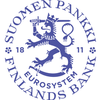BOFIT Forecast for China 2024–2026: Productivity gains key to China maintaining growth

The latest forecast from BOFIT, the Bank of Finland’s Institute for Emerging Economies, sees structural and cyclical factors bringing down economic growth over coming years. Growth is expected to slow to roughly 4 % this year and then to 3 % p.a. in 2025 and 2026. The lack of reliable Chinese statistical data makes detailed assessment of the situation challenging.
China’s official figures show GDP rose by 5.2 % last year. Alternative calculations by BOFIT, however, suggest that GDP growth has underperformed official estimates in recent years. Economic growth in the first months of this year was fairly brisk (officially 5.3 % in the first quarter) thanks to strong industrial growth. No large changes to the outlook for economy overall have occurred since our October 2023 forecast. We continue to anticipate about 4 % growth this year. Growth is expected to slow to around 3 % in 2025 and 2026. The degraded quality of Chinese statistical reporting makes it increasingly difficult to evaluate economic conditions and adds uncertainty to our forecast.
China’s economic growth is constrained by an ageing population, weak business environment and the Communist Party’s ever-tightening grip on the economy. New real estate construction and apartment sales have declined substantially, and relations between China and its trading partners cloud the outlook for export industries. No significant progress in these areas is expected during the forecast period. China’s high debt-to-GDP ratio and the weak public sector create a dilemma for government by limiting its room to manoeuvre in the fiscal policy sphere and the ability of the financial sector to cope with risk. Reforms that lift total factor productivity and increase domestic consumption would enhance growth.
"China is currently attempting to shift its economic policy emphasis to manufacturing, particularly fields involving advanced technologies. With the real estate crisis, the government is forced to look beyond construction investment for new engines of economic growth. Measures that increase productivity are a welcome development in efforts to support economic growth.” notes Riikka Nuutilainen, a senior economist at BOFIT.
An increase in state-designated innovation projects comes, however, with a significant risk of wasteful investment and further increases in overcapacity that already plague many branches. Since domestic demand remains tepid, increases in capacity will likely support the already excellent price competitiveness of Chinese exporters.
“Increased production of cheap exports could exacerbate already heightened tensions between China and its trade partners,” Nuutilainen observes.
The forecast document is available at https://www.bofit.fi/en/forecasting/latest-forecast-for-china/.
For further information:
Riikka Nuutilainen, Senior Economist, riikka.nuutilainen@bof.fi, p. +358 9 183 2518
Iikka Korhonen, Head of Research, iikka.korhonen@bof.fi, p. +358 9 183 2272
Keywords
The Bank of Finland is the national monetary authority and central bank of Finland. At the same time, it is also a part of the Eurosystem, which is responsible for monetary policy and other central bank tasks in the euro area and administers use of the world’s second largest currency – the euro.
Subscribe to releases from Suomen Pankki
Subscribe to all the latest releases from Suomen Pankki by registering your e-mail address below. You can unsubscribe at any time.
Latest releases from Suomen Pankki
Kutsu medialle: Suomen Pankin tiedotustilaisuus 19.12.2025 Suomen talouden näkymistä12.12.2025 13:41:01 EET | Kutsu
Elpyykö Suomen talous? Miten kauppasota ja maailmantilanteeseen liittyvä epävarmuus vaikuttaa talouskehitykseemme? Mitkä ovat julkisen talouden näkymät?
Bulgarisk lev kan växlas till euro i Finland 1.1.–2.3.202612.12.2025 11:00:00 EET | Pressmeddelande
Bulgarien övergår till euro den 1 januari 2026. För att valutautbytet ska gå så smidigt som möjligt växlar euroländernas centralbanker in lev till euro under tiden 1.1–2.3.2026.
Bulgarian levat voi vaihtaa Suomessa euroiksi 1.1.–2.3.202612.12.2025 11:00:00 EET | Tiedote
Euro otetaan käyttöön Bulgariassa 1.1.2026. Nopeuttaakseen Bulgarian levojen kotiuttamista euroalueen keskuspankit vaihtavat levoja euroiksi 1.1.–2.3.2026.
Bulgarian levs can be exchanged for euros in Finland from 1 January to 2 March 202612.12.2025 11:00:00 EET | Press release
The euro will be introduced in Bulgaria on 1 January 2026. To accelerate the repatriation of Bulgarian levs, the central banks of the euro area will exchange levs for euros from 1 January to 2 March 2026.
ECB-rådet föreslår förenkling av EU:s bankregelverk11.12.2025 11:04:31 EET | Beslut
Europeiska centralbanken (ECB) publicerade i dag de rekommendationer som tagits fram av ECB-rådets högnivågrupp för förenkling i syfte att förenkla regelverket för reglering, tillsyn och rapportering i Europa.
In our pressroom you can read all our latest releases, find our press contacts, images, documents and other relevant information about us.
Visit our pressroom